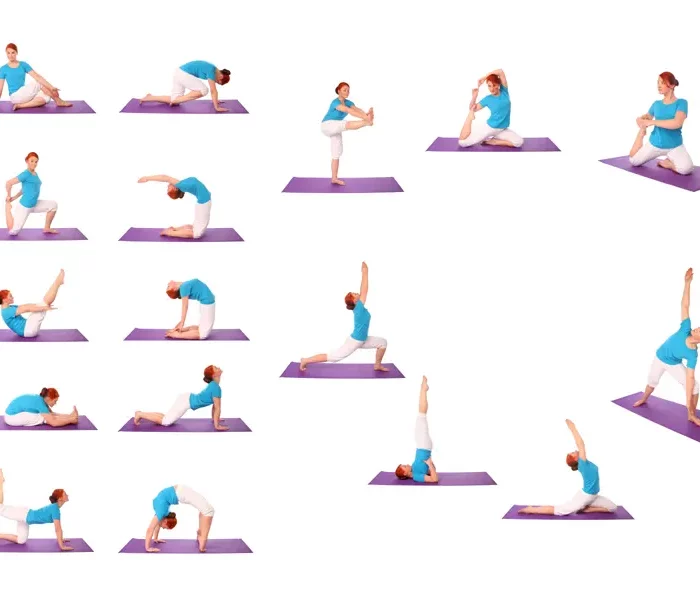
Wellhealthorganic.com:yogasanas-to-improve-memory
Yogasanas, or poses, can improve memory in a few different ways. Yoga has been shown to improve focus, concentration, and attention span. In addition, yoga asanas can help refresh the mind and increase circulation. All of these things can help improve memory.
What are yogasanas and what are they purported to do?
Yogasanas, also known as yoga postures, are physical exercises that have been practiced for centuries in India. The word “yoga” means union or connection between the body, mind and spirit. Yogasanas are one of the eight limbs of yoga and are believed to bring about physical and mental health benefits.
In terms of memory improvement, certain yogasanas such as Padmasana (Lotus Pose) and Vajrasana (Thunderbolt Pose) can help increase blood circulation to the brain which improves cognitive function. Other yogasanas like Sarvangasana (Shoulder Stand) and Halasana (Plow Pose) can help reduce stress levels by activating the parasympathetic nervous system thus improving overall brain function including memory retention.
It is important to note that while yogasanas may improve memory, it should not be seen as a quick fix solution. Regular practice over time along with other lifestyle changes such as a healthy diet and adequate sleep can lead to better results. Additionally, it is recommended that one consults with a certified yoga instructor before attempting any new yogasanas especially if they have pre-existing medical conditions or injuries.
Read Also: WELLHEALTHORGANIC.COM:VITAMIN-E-HEALTH-BENEFITS-AND-NUTRITIONAL-SOURCES
There are several yoga asanas that can help improve memory and concentration. Here are some of them:
Padmasana (Lotus Pose):
This is a seated yoga posture that helps to calm the mind and improve concentration. Sit cross-legged on the floor with your back straight and your hands resting on your knees. Focus on your breath and try to clear your mind of any distracting thoughts.
Padmasana, also known as Lotus Pose, is a seated posture that is widely practiced in yoga for its ability to promote relaxation and concentration. This pose requires you to sit cross-legged with your feet resting on opposite thighs while keeping your spine straight. The hands can be placed on the knees with palms facing up or down depending on personal preference.
This asana has numerous benefits beyond promoting relaxation and concentration. Padmasana helps stretch the hips, knees, and ankles while strengthening the spine and improving posture. It also helps improve digestion by stimulating the abdominal organs and reducing bloating.
In addition to physical benefits, Padmasana can help improve memory retention by calming the mind and reducing stress levels. Practicing this pose regularly can enhance overall cognitive function by improving blood circulation to the brain and increasing oxygen supply. Incorporating Padmasana into your daily routine can lead to a sharper mind, better focus, and improved memory retention over time.
Vajrasana (Thunderbolt Pose):
This is another seated pose that can help improve memory and concentration. Kneel on the floor with your legs folded underneath you and your back straight. Place your hands on your knees and focus on your breath.
Vajrasana, also known as the Thunderbolt Pose, is a simple seated yoga posture that can help improve your memory. This pose involves sitting on your heels with your palms resting on your thighs and your eyes closed while breathing deeply. It helps to calm the mind and reduce stress, which can lead to improved cognitive function.
Research has shown that practicing Vajrasana regularly can increase blood flow to the brain and enhance neural connectivity. This increased blood flow and neural activity can help boost memory retention and recall abilities. Additionally, this pose stretches the muscles in the legs and ankles, helping to relieve tension in those areas that could distract from focus during mental tasks.
Incorporating Vajrasana into your regular yoga practice or even just practicing it for a few minutes each day can have significant benefits for improving memory function. Along with other physical exercises or mental activities aimed at improving cognitive abilities such as meditation or reading books, Vajrasana is an excellent addition to anyone’s routine looking for better memory performance.
Also Read: WELLHEALTHORGANIC.COM:AMLA-POWDER-USES-FOR-HAIR-AND-OTHERS
Sarvangasana (Shoulder Stand):
This inverted pose helps to improve blood flow to the brain, which can improve memory and concentration. Lie on your back and lift your legs up towards the ceiling, supporting your hips with your hands. Hold the pose for a few breaths before lowering your legs back down.
Sarvangasana, also known as the Shoulder Stand, is a powerful yogasana that can help improve memory and concentration. This pose involves lifting your legs and hips off the ground while supporting your entire body weight on your shoulders. It helps to stimulate blood circulation to the brain, which in turn enhances cognitive function.
This asana has several benefits beyond improving memory. It helps to regulate thyroid and parathyroid gland function, improves digestion and metabolism, relieves stress and anxiety, and strengthens the upper body muscles. To get into this pose safely, beginners should use props such as blankets or blocks under their shoulders for support.
It is important to note that Sarvangasana should be avoided during menstruation or pregnancy. People with neck injuries or high blood pressure should also avoid this pose or practice it under the guidance of an experienced yoga teacher. With consistent practice over time, Sarvangasana can be a valuable addition to anyone’s yoga practice looking to improve their overall mental and physical health.
Halasana (Plow Pose):
This pose is similar to Sarvangasana, but with the legs extended over the head. It also helps to improve blood flow to the brain and can improve memory and concentration.
Halasana, also known as Plow Pose, is an effective yoga posture that helps in improving memory and concentration. It is a forward bending pose that stretches the spine and calms the nervous system. This asana can stimulate blood flow to the brain, which can help to improve cognitive function.
In Halasana, the body is folded over itself with the legs behind the head. This inversion pose allows fresh blood and oxygen to flow to the brain and nourish it. The pressure on the neck region also stimulates thyroid glands, which regulate metabolism and energy levels. Practicing this pose regularly can be beneficial for people who experience fatigue or low energy levels.
Halasana can also help in reducing stress and anxiety by promoting relaxation of both body and mind. It is believed that regular practice of this pose may help reduce symptoms of depression by calming down an agitated mind. Additionally, it can improve digestion and relieve constipation due to its impact on abdominal organs such as liver, pancreas, spleen etc., making it a great overall health booster.
Also Read: WELLHEALTHORGANIC.COM 10-BEST-WAYS-TO-USE-BLUEBERRIES
Bhramari Pranayama (Bee Breath):
This breathing technique involves making a humming sound while exhaling, which can help to calm the mind and improve concentration.
Bhramari Pranayama, also known as Bee Breath, is a breathing technique practiced in yoga to calm the mind and release stress. It involves inhaling deeply and exhaling while making a humming sound similar to that of a bee. This pranayama helps to improve memory by reducing anxiety levels and promoting relaxation.
Apart from its memory-boosting benefits, Bhramari Pranayama has several other advantages for overall health. It can help reduce blood pressure, improve digestion, and even alleviate headaches. With regular practice, this breathing technique can also enhance concentration levels and focus making it an excellent exercise for students or those engaged in mentally challenging work.
To perform Bhramari Pranayama correctly, sit comfortably with your eyes closed and take deep breaths through your nose. Hold your breath for a few seconds before exhaling slowly while humming like a bee. Repeat this process several times while maintaining focus on the sound of the humming to achieve maximum results.
It’s important to remember that regular practice is key to seeing the benefits of yoga for memory and concentration. Start with just a few minutes each day and gradually increase the amount of time you spend practicing.
Also Read: WELLHEALTHORGANIC.COM:RAW-BANANA-FLOUR-BENEFITS-AND-USES
conclusion
In conclusion, practicing yoga asanas can be an effective way to improve memory retention and recall. The physical postures involved in yoga help increase blood flow and oxygenation to the brain, which can enhance cognitive function. Additionally, the meditative aspects of yoga help reduce stress and anxiety, both of which are known to impair memory.
It is important to note that regular practice is key when it comes to reaping the memory-boosting benefits of yoga. A one-time session may provide some temporary relief from stress or improved concentration, but true improvements in memory require consistent effort over time.
Furthermore, it is always recommended to consult with a doctor before beginning any new exercise routine, especially if you have pre-existing health conditions. With dedication and guidance from a qualified instructor, incorporating yogasanas into your daily routine can have numerous physical and mental health benefits beyond just improving your memory.
FAQ
Q: Can yoga really improve memory?
A: Yes, yoga can improve memory as it helps to calm the mind, reduce stress, and increase blood flow to the brain.
Q: How often should I practice these yoga asanas to see results?
A: You should aim to practice these yoga asanas regularly, ideally every day or a few times a week, to see results.
Q: Are there any other benefits of practicing these yoga asanas?
A: Yes, in addition to improving memory and concentration, these yoga asanas can also help to reduce stress, improve flexibility and posture, and boost overall physical and mental health.
Q: Are there any precautions I should take before practicing these yoga asanas?
A: It’s always a good idea to consult with a healthcare professional before starting a new exercise routine, especially if you have any medical conditions or injuries. Additionally, it’s important to listen to your body and not push yourself beyond your limits, especially when practicing inverted poses like Sarvangasana and Halasana.










